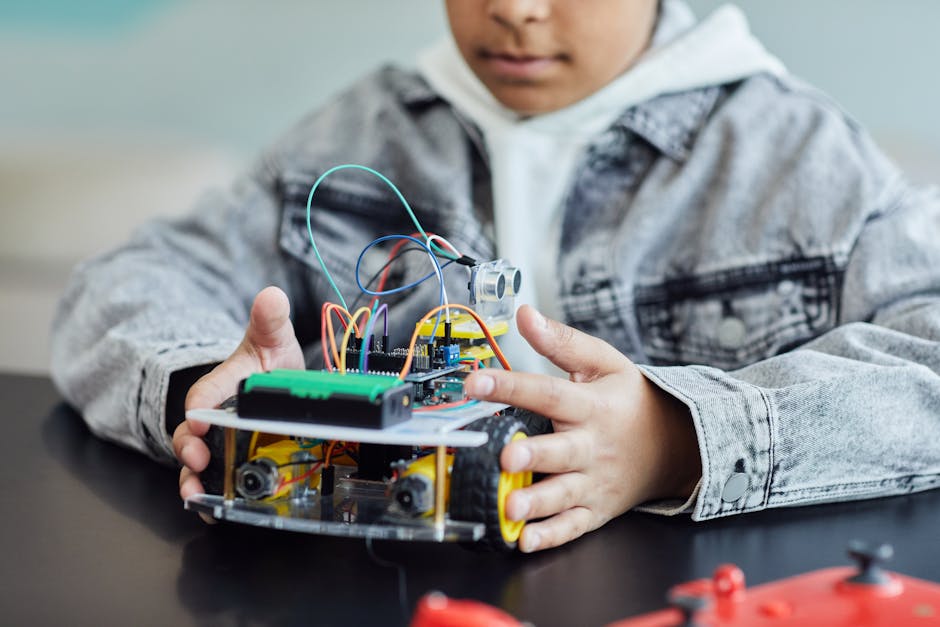How to Host a Toy-Making Workshop for Kids
Creating a toy-making workshop for kids is a fun and rewarding way to inspire creativity and hands-on learning. Whether you’re a teacher, parent, or community organizer, hosting such an event can provide children with a platform to express their imaginations while learning valuable skills. In this blog post, we’ll guide you through the process of setting up a successful toy-making workshop for kids. Let’s dive in! 🎨🧸
Table of Contents
1. Introduction
2. Planning Your Workshop
3. Gathering Materials and Tools
4. Designing the Workshop Layout
5. Safety First!
6. Engaging the Kids
7. Conclusion
8. FAQs
Planning Your Workshop
The first step in hosting a toy-making workshop is careful planning. This involves selecting a theme, identifying the age group of the participants, and determining the duration of the workshop.
Selecting a Theme
Choosing a theme can help focus your workshop and make it more enjoyable for the kids. Popular themes include building stuffed animals, crafting wooden toys, or creating recycled material toys. Consider what will be both fun and manageable for the age group you’re working with.
Identifying the Age Group
Understanding the age group of your participants will help tailor the complexity of the activities. For younger children, simpler crafts like paper toys or basic clay models may be appropriate. Older kids might enjoy more challenging tasks like constructing model cars or robots.
Determining the Duration
Decide on the length of the workshop based on the complexity of the projects and the attention span of the children. Typically, 1-2 hours is sufficient, with a mix of structured activities and free play.
Gathering Materials and Tools
Having the right materials and tools is crucial for a smooth workshop experience. Make a list of everything you’ll need well in advance.
Materials
Depending on your theme, you might need fabric, stuffing, wooden pieces, glue, paint, recycled materials, and more. Always ensure you have more than enough supplies to accommodate all participants.
Tools
Ensure you have safe, child-friendly tools available. Scissors, paintbrushes, and glue sticks should be easy for small hands to use. For older kids, you might include screwdrivers or small hammers, but always with close supervision.
Designing the Workshop Layout
A well-thought-out layout can enhance the workshop experience. Create a welcoming and organized environment that encourages creativity and interaction.
Seating Arrangements
Arrange tables and chairs in a way that allows children to collaborate and share ideas. Round tables or clusters can encourage group work and communication.
Demonstration Area
Set up a dedicated space for demonstrations. This will help keep the attention focused and make it easier for you to guide the children through the toy-making process.
Safety First!
Safety is paramount when working with children. Take the necessary precautions to ensure a safe workshop environment.
Child-Safe Tools
Provide tools that are specifically designed for children, with rounded edges and non-toxic materials. Always supervise the use of any potentially hazardous tools.
First Aid
Have a first aid kit on hand, and ensure adults present are aware of basic first aid procedures. Being prepared for minor accidents is crucial.
Engaging the Kids
Keeping kids engaged throughout the workshop is key to its success. Here are some tips to maintain their interest and enthusiasm.
Interactive Storytelling
Combine the toy-making activities with storytelling. Create a narrative around the toys they are making, which can help to fuel their imagination and creativity.
Encouraging Creativity
Allow the children to express themselves freely. Encourage them to experiment with colors, shapes, and designs, and celebrate their unique creations.
Games and Prizes
Incorporate games and offer small prizes to motivate participation and make the experience more exciting. A little competition can be fun and rewarding.
Conclusion
Hosting a toy-making workshop for kids is not just about crafting; it’s about creating a memorable experience that fosters learning, creativity, and joy. By carefully planning, gathering the right materials, ensuring safety, and engaging the kids effectively, you can create an enriching environment that leaves a lasting impact. Ready to get started? Let the toy-making adventure begin! 🎉
FAQs
Q: What age group is best suited for a toy-making workshop?
A: Toy-making workshops can be adapted for a wide range of ages, typically from ages 4 to 12. The key is to tailor the complexity of the projects to the age group.
Q: How many participants should I expect?
A: Depending on the space and resources available, a group of 10-20 children is manageable for most workshops.
Q: What should I do if a child gets hurt?
A: Ensure that a first aid kit is readily accessible and that you know basic first aid procedures. Always supervise activities closely to minimize risks.
Q: Where can I find materials for the workshop?
A: Materials can be sourced from craft stores, online retailers, or even by recycling items from home. Plan ahead to ensure you have all necessary supplies.
